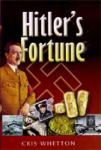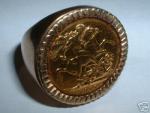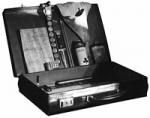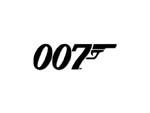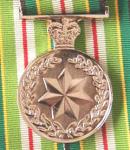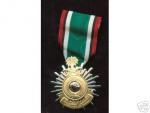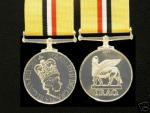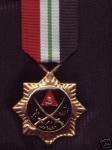-
Posts
208 -
Joined
-
Last visited
Content Type
Profiles
Forums
Blogs
Gallery
Events
Store
Everything posted by mariner
-
There`s a new book out called Hitler's fortune by Chris Whetton, which I thought might be of interest.
-
The 1922 Argonaut Gold Mine Disaster Occasionally a news event has such an impact it seems to cause even time itself to stop. Such an incident was the Argonaut Gold Mine disaster, one of the most tragic workplace accidents of the 20th century. During the evening of Aug. 27, 1922, 47 men were deep underground working the night shift at the mine near Jackson, Calif. During the men's supper break, the unthinkable happened. An explosion and fire erupted inside the shaft, trapping the men more than 4,600 feet underground. As friends and family gathered, the ordeal of trying to rescue the workers began. Mace's "47 Down" is the riveting account of this tragedy and it has the same emotional impact of the recent best-seller "The Perfect Storm." Mace writes with taut prose, grabbing his reader by the collar. Even after a passage of more than 80 years, it is a compelling story that has lost none of its drama or punch. Drawing on newspaper accounts, diaries, government reports and official documents, Mace captures all of the drama and heartbreak of this event. This book is exceptional historical reporting and highly recommended
-
Beaconsfield mine collapse The Beaconsfield mine collapse occurred on April 25, 2006 in Beaconsfield, Tasmania, Australia. Of the 17 people who were in the mine at the time, 14 escaped immediately following the collapse, one was killed, and the remaining two were found alive after five days nearly a kilometre below the surface. These two miners were freed on Tuesday May 9, a full two weeks after being trapped. Mine collapse At 9:26 pm (Australian Eastern Standard Time) on April 25 2006, a suspected seismic event triggered an underground rock fall at the Beaconsfield gold mine in northern Tasmania. Geoscience Australia said that the earthquake had a magnitude of 2.2, at a shallow depth at coordinates 41.190? S 146.840? E.[1] Earlier speculation had suggested that mine blasting had caused the collapse.[2] Three of the miners working underground at the time were trapped,[3] and early reports suggested that 14 miners who were underground at the time had managed to scramble to safety. The mining company, Beaconsfield Gold Mine Joint Venture, released a press statement saying they held "grave concerns for [the three miners] wellbeing".[4] Larry Knight (44), Brant Webb (37) and Todd Russell (34), were the three miners who remained unaccounted for. Knight had apparently been killed in the initial rockfall, but Webb and Russell were still alive, trapped in part of the vehicle in which they had been working at the time of the collapse, known as a teleloader or telehandler. They were in a basket at the end of the telehandler's arm, where they had been applying steel mesh to the walls of the tunnel, ironically in order to prevent rockfalls.[5] It was initially misreported that the two miners were saved by a slab of rock that fell on top of the basket, however in a Channel 9 exclusive interview broadcast on May 21 Webb and Russell stated that this was incorrect and that the "ceiling" above them was merely thousands of individual unstable rocks precariously packed together. The cage was partially filled with rock, and the men were partially buried under some rubble. Webb seemed to have been knocked unconscious for a short time, and Russell's lower body was completely buried.[5] When Webb awoke, the two were able to free themselves and each other from the fallen rock by cutting through their clothes and boots, which were stuck in the rock, using stanley knives.[5] The miners were able to survive by drinking groundwater, seeping through the rock overhead, which they had collected in their helmets.[5] Webb also had a muesli bar with him, which he offered to cut in half and share with Russell. The men initially agreed to wait 24 hours to eat it, but they continually extended the time, until they decided to eat it on April 29. They then ate small pieces of the bar at a time, to make it last as long as possible. However, Russell later lost a large portion of his half of the bar when it fell out of his pocket.[5] [edit] Rescue effort On April 26 a remote-controlled earth mover began clearing the rock underground. On the morning of April 27, at 7:22am, the body of one of the miners was found in the shaft.[6] At around 8pm, the body was retrieved and was identified as the body of Larry Paul Knight, 44, of Launceston.[7] He was the driver of the telehandler.[citation needed] Rescue workers did not proceed further through the rubble past the back end of the telehandler because it was unsafe,[8] instead choosing to blast a new tunnel across from the main shaft to the side shaft, aiming to come out in front of the telehandler. On April 29, they began blasting a new tunnel, detonating at least six large explosive charges to form the tunnel. The blasts dislodged rock inside the cage of the telehandler, which Webb and Russell attempted to clear, although as the blasts came closer, rock was dislodged faster than they could clear it.[5] Russell recorded the date and time of each blast on his clothing, so that if they died as a result of the blasting, the rescuers would know that they had been alive prior to a particular blast. Both Webb and Russell also wrote letters to their families on their clothing.[5] The two men sang The Gambler by Kenny Rogers (the only song they both knew) in order to keep up their spirits, as they waited for successive blasts to occur in the tunnel. At one point they could hear rescuers talking, and shouted at them to be quiet so that their singing would not be interrupted.[5] At 5:45 pm on April 30, 2006, Webb and Russell were found alive after being trapped underground for five days. They were detected by thermal imaging cameras and a microphone.[9][10] One rescuer found a direct route to the trapped miners, across the rubble in the side shaft, and was able to get close enough to the basket of the telehandler to shake Russell's hand.[5] This was where a remote-controlled loader had got to the back of the teleloader, but this route was deemed unsafe for rescuing them.[8][11] Webb and Russell themselves did not want the rescuers to attempt to reach them through the rubble, because to do so would require them to cut through the wire on the side of the cage, which was under considerable pressure from the rock above. The two men were afraid that cutting the cage would cause it to collapse.[5] Rescuers immediately halted blasting in the access tunnel, and instead drilled a smaller hole through the approximately 14.5 metres of rock between the head of the access tunnel and the part of the side shaft where the miners were trapped. Webb and Russell directed the work by listening to the sound of the drilling and judging the direction. The hole was about 90 millimetres in diameter. A PVC pipe was used to line the hole, which was used to deliver fresh water, food and communications equipment to the men.[12][13] On May 1, 2006 rescuers were still 12 metres from the miners. They were also later sent a digital camera, a torch, dry clothes, magazines, iPods including music from the Foo Fighters, deodorant and toothpaste.[14] They also received letters from their families, and were able to write letters in return. In one letter to his wife, Russell wrote "It's not much of a room we have up here."[5] Russell asked for the previous Saturday's newspaper because he said he would be looking for a new job, after joking about losing his current one for lazing about.[15] One mine official questioned why Russell would want to look for a job, since he already had one, Russell in a later interview saying that he had replied, "I told him to stick it up his..."[5] They were also sent medical supplies, with which Webb was able to treat the injuries to Russell's leg, with advice from paramedics.[5] It was also on May 1 that the two men also asked about Larry Knight, and rescuers told them that he had been found dead.[5] The rescue effort by drilling was put off on Monday 1 May because of the danger of another collapse. It was decided to use a raise borer anchored in concrete, with the last load of the concrete being delivered before dawn on Wednesday, May 3, 2006. The machine cut a horizontal tunnel one metre wide. [16] Later that day it was announced that the drilling to go the final 12 metres would commence within hours.[17]. At about 6:45pm, drilling of a 20cm pilot hole for the raise borer commenced.[18] Using the normal procedure for this machinery, a pilot hole was drilled, for the larger diameter borer to follow. This took more than three days to complete. According to Beaconsfield mine manager Matthew Gill, the quartz rock which was drilled through was 5 times harder than concrete. The drill was capable of drilling through it at 1 metre per hour, but it was going much more slowly because of the danger of further rock falls, at a rate of around 460 millimetres per hour. [19] Low-impact explosives were inserted into approximately 50 small holes that were drilled into the last section of rock.[20] Drilling of the rescue tunnel commenced on Thursday 4 May at about 8:00pm guided by the completed pilot hole. It was gouged out to one metre and was planned to come up underneath the men's cage after passing through 16 metres of rock.[21]. The last phase was to involve a miner using hand tools to create an opening whilst lying on his back.[22] As at 7:00 am on Saturday May 6, the raise borer had drilled about 11 metres of the 14.5 metre rescue tunnel.[23] The mine decided on the shortened route late on Friday night.[24] The major drilling operation was completed by 6:00pm on Saturday, with only a few metres remaining to reach the trapped miners. Several hours work dismantling and removing the boring machine from the escape tunnel were required before the final phase of the rescue commenced.[25] On May 7, the rescuers reached a belt of hard rock that they found hard to penetrate. As the diamond-edged chainsaws they were using had little effect, they reverted to using low-impact charges. On May 8 the horizontal tunnel was completed, with rescuers beginning tunnelling upwards in the short vertical tunnel, since the horizontal tunnel had been dug lower than the level of the miners. [26] At about 9:30pm a probe passed through the rock below where the miners were located, which indicated there was only a metre between them, including 400 millimetres of hard rock. [27] After 14 nights, at 4:27 am, rescuers Glenn Burns, Donovan Lightfoot and Royce Gill finally reached the men, one of them yelling "I can see your light" when he broke through the ground which was separating him from the miners, to which the miners replied "I can see your light too". [28][29] Brant Webb was freed at 4:47am on May 9, followed by Todd Russell at 4:54 am. They were driven up the spiral shaft of the mine, arriving at a medical station at the base of the vertical shaft from the surface at about 5:30 am. They were checked by a doctor, and then sent up the lift towards the surface. About thirty metres from the surface, they got out of their wheelchairs, which were moved to the rear of the lift so as to be out of sight.[5] At 5:58 am both men walked out of the lift cage unaided "...punching their fists in the air to the cheers of the Beaconsfield crowds who had gathered outside the mine gate. Wearing their fluoro jackets and lit miner's helmets, the men switched their safety tags to 'safe' on the mine out board before embracing family members who rushed to hug them."[30] Both were then transported to Launceston General Hospital in nearby Launceston just after 6:00 am local time. Russell had an injured knee, and a damaged vertebra which put pressure on his sciatic nerve, while Webb had injuries to both knees, several vertebra and his neck.[5] [edit] Reaction Hundreds of journalists arrived in the town to cover the story, causing inconvenience for locals.[31] Australian Opposition Leader Kim Beazley, at a May Day march in Brisbane, associated the mining accident with the government's new industrial relations legislation, after which Kevin Andrews called on him to apologise for politicising the incident.[32] Australian Prime Minister, John Howard said his message to the miners would be "Everybody is with you, mate".[33] On the afternoon of May 7, prominent Australian journalist Richard Carleton suffered a heart attack at a press conference while at the mine. He was transported to hospital, before being pronounced dead by a doctor.[34] Less than six hours after they were rescued, Todd Russell joined more than a thousand mourners at Larry Knight's funeral. The funeral had been postponed constantly in the hope that both rescued miners could attend, before finally settling on Tuesday May 9 at 1:00pm. Russell attended after being discharged from Launceston General Hospital in time. When Dave Grohl of the Foo Fighters heard of the miners' request to have the band's music sent down on mp3 players, he issued a personal message via fax to them indicating he would meet them for a beer. [35] Following a meeting the Australian Workers' Union held with the miners from Beaconsfield on May 15 they reported that no miner could be found who had been given workplace safety training, miners were unhappy with reductions in the amount of cement used to close in exploited parts of the mine, supports had been removed from lower parts of the mine and mesh intended to prevent rock collapse was known to be ineffective. Chequebook journalism Interest in gaining media deals with both survivors is increasing with Oprah Winfrey's production company Harpo expressing interest.[37] Interest from the United States was particularly strong given two January 2006 mining disasters in West Virginia (see: Sago Mine disaster and Aracoma Alma Mine accident) which resulted in the deaths of 15 miners. Ten News reported that the survivors were offered $3 million each, and Channel Nine boss Eddie McGuire attended the pub where the residents of Beaconsfield were celebrating the rescue. During The Footy Show, they crossed live to a special event held in Beaconsfield where both miners appeared and were questioned by McGuire. The Daily Telegraph revealed that the Nine Network secured a deal for $2.6 million, for a 2-hour special on the night of Sunday May 21 entitled "The Great Escape".[38][39] News reports said the miners told Kim Beazley (who visited them) some details about their ordeal, but they were kept "private", disguising the real reason behind the secrecy. The value of the story was reduced by the continued stream of media reports detailing the ordeal, such as Enough Rope with Andrew Denton's interview with one of the rescuers Paul Featherstone.[40] Bad Ground: Inside the Beaconsfield Mine Rescue In November 2006, a book about the collapse of the mine and the rescue operation was released. Entitled Bad Ground: Inside the Beaconsfield Mine Rescue (ISBN 1921208872), the book was written by journalist Tony Wright, and featured extensive interviews with Russell, Webb and their rescuers.[41]
-
Rescuers seek Russia gold mine disaster survivors 1.00pm Saturday September 9, 2006 MOSCOW - Rescuers struggled today to reach more than 20 Russian miners still missing underground more than a day and a half after a fire broke out at their gold mine in Eastern Siberia. Rescue workers recovered the bodies of at least 11 miners. Smoke and high temperatures hindered the search for the rest, and rescuers did not know if those missing were alive or dead. Distraught relatives waited outside the Darasun mine, in a remote area near the Chinese border. "My brother is down there," mine worker Nikolai Bronnikov told Rossiya television, then turned away from the camera in tears. A spokesman for Russia's Emergencies Ministry said the fire had been localised but not put out in the central shaft of the Darasun complex, owned by London-listed Highland Gold. "There is still hope of finding survivors," he said. Thirty-three men were trapped when welding work sparked the fire deep underground yesterday but there was confusion over the exact number of dead found. Highland Gold Mining initially said 12 bodies had been recovered but then changed the figure to 11, matching information given by the Emergencies Ministry. The environmental watchdog Rosprirodnadzor said it would investigate the Anglo-Russian company's activities. It later ordered urgent safety inspections of mines operated by the nation's top gold producer, Polyus Gold, and several coal miners, Interfax news agency said. Highland Gold shares plunged 11 per cent on Friday on the London Stock Exchange to ?1.53, following losses of 4.5 per cent the day before. Polyus shares fell 1.82 per cent to 1134.0 roubles per share on Russia's MICEX exchange. Russian media said the miners had breathing devices, which should allow them to hold out for several hours, and air pumped into the shaft improved the chances of survival. Rosprirodnadzor head Oleg Mitvol said yesterday technical violations have been found not only on the Darasun complex, but in all other Highland Gold Mining assets in Russia. The Darasun mine is the smaller of Highland Gold's two operational gold mines in Russia. The complex produced 11,761 ounces of gold in the first half of this year, around 13 per cent of the company's total production. Highland Gold is one-fifth owned by Canada's Barrick Gold, the world's largest gold miner. Fleming Family & Partners and its affiliates hold 19.5 per cent and the company's Anglo-Russian management team a further 12.5 per cent. Tucked in the desolate foothills of Chita, the Darasun mine is Russia's oldest hard-rock gold deposit with proven reserves of 31 tonnes and estimated resources of 96 tonnes.
-

History of the Gold Sovereign
mariner replied to bigjarofwasps's topic in Coins & Commemorative Medallions
I`ve had a look at the hall marks. Its very difficult to see them, as there very worn. I`ve been unable to ascertain any information off them -

History of the Gold Sovereign
mariner replied to bigjarofwasps's topic in Coins & Commemorative Medallions
I wonder which route it took during its journey? Will have a look at the mint marks, and let you know, with regards when the ring was made. -
Thanks Kevin, thats very interesting!!!! I have a few examples of trench art, but I have no idea whether they were made at the time or afterwards, one is made out a 1900 shell. Both are very nice to look at.
-

Nazi occupation of Greece
mariner replied to bigjarofwasps's topic in Coins & Commemorative Medallions
Arthur Paton, who has died aged 88, won an MC in North Africa with the 11th Hussars before being recruited by the Special Operations Executive to supply the Greek resistance movement. Early in 1942, Paton had a chance meeting at the Long Bar of the Gezira Club in Cairo with a major in Intelligence who was looking for a Russian-speaker whom he could trust; Paton was interviewed by SOE and taken on. He narrowly escaped a mission to blow up oil supplies in Azerbaijan, considered to be suicidal, and was posted to Istanbul. Paton knew the city well and was dispatched to the Bay of Fethiye in southern Turkey with the cover story that he was an Oxford geologist. His job was to try to stop the export of chrome, an important steel-hardener, to the Germans, and he persuaded the manager of a French mine to slow up production, not an easy task considering that the directors in France were pro-Vichy. Paton also prevailed upon a ship-owner to scuttle his cargo of chrome outside the Bosphorus, promising him that the British would buy him a Liberty ship after the war, an undertaking which was subsequently honoured, albeit without enthusiasm, by the authorities. Paton was then posted to Smyrna and, in September 1943, he was running an operation smuggling ammunition, wireless sets and gold sovereigns to the Greek resistance. These were concealed aboard caiques and sent from Cyprus to Egrilar, a small cove in the Cesme peninsular. The consignments were collected by SOE operatives, many of whom were supplying Paddy Leigh Fermor, Xan Fielding and other Allied agents and resistance groups operating in the islands to the west. One gold sovereign, it was calculated, would keep an agent in Greece for a week. Paton said afterwards that 96 caiques had come over to the Allies from enemy-occupied Greece, and 146 operations were run out of the port of Egrilar. Arthur William Paton was born on April 8 1916 in Korea, where his father was British Consul. Young Arthur travelled widely, and one of his earliest memories was of skating on the frozen water in Vladivostok harbour. His earliest education was with a White Russian governess, the daughter of a Tsarist general, and when he went to preparatory school at Hindhead, in Surrey, he was still writing in Cyrillic script. He went on to St Edward's, Oxford, where he was head boy and captained the football, rugby and cricket teams before gaining a scholarship to Christ Church, Oxford; there he read History and played rugby and tennis for his college. At 19, Paton was playing rugby for Harlequins and went on to play regularly for the team. After coming down, he worked for several months on the Humber production line in Coventry, before joining Burmah Oil. He was on the point of travelling to Burma when the Second World War broke out. Having been commissioned into the 11th Hussars, he took part in the campaign in North Africa. On December 10 1941, Paton was commanding a troop on patrol near Acroma, south-west of Tobruk, when he came across a bivouac of about 200 Axis infantry supported by eight field guns. He ignored the infantry and charged the guns, putting four of them out of action and killing all but one of the gun crews. The remaining gun crew opened fire at a range of 500 yards, forcing him to withdraw because he was short of ammunition and because two of his three guns had jammed. The citation for his MC stated that his courage and quick thinking had saved his troop from almost certain destruction. On another occasion, Paton's three armoured cars were shot up by a German aircraft. Fortunately, the crews were brewing up some small distance away and, with the help of the troop sergeant, who had been a London bus driver, they were able to convert the damaged vehicles into two serviceable ones and returned safely to base. After the end of the war in Europe, Paton was posted to Ceylon. While he was there he made a journey to the Philippines by flying-boat to deliver a personal message from Mountbatten to MacArthur. Demobilisation was followed by a spell at the Foreign Office, before a fishing business took him to Kenya for four years. This venture, however, did not prosper, and Paton joined the Bombay Burmah Trading Corporation, then becoming famous through Bill Williams's book Elephant Bill. He arrived in Bangkok in 1951 and lived in a bungalow beside the mill where the teak logs were turned into decks for ships; he subsequently sold some of the timber for use on the Royal yacht, Britannia. Paton was posted to Wallace Bay, Borneo, a logging port on Sebatik Island. He relished the challenge of making the port profitable and improving the lives of some 2,000 inhabitants. Soon, 12 ships a month were being loaded and schools were being built. Under Paton's supervision, the first cocoa trees were planted, and cocoa became one of the country's leading exports. His wife taught in the Christian School and, in 1958, he was invited to sit on the Legislative Council of North Borneo and then on the Executive Council. Paton returned to England in 1965. He was appointed OBE and lived in Sussex. He enjoyed gardening and exploring Europe, North Africa and the Middle East in his motor caravan. Arthur Paton married, in 1955, Jane Cooper, who survives him with three sons and a daughter. -
I was hoping that would be the case. Total craftsmanship!!! I`m sure you`ll agree what a beautiful piece thanks very much for sharing it with us!!!!!
-
Beautiful!!!! Is it heavy? Do you think its made from two coins, or one cut in half?
-

The true story of the RMS Douro
mariner replied to bigjarofwasps's topic in Coins & Commemorative Medallions
http://cgi.ebay.es/A-REAL-PIECE-OF-GOLD-TR...6QQcmdZViewItem http://cgi.ebay.co.uk/1872-Victorian-Sover...8QQcmdZViewItem -
I wonder if it was made in Crimea or afterwards? I always find it amazing the levels of quality in this type of thing. Like the old WW1 trench art, and POW stuff. Some of it is really beautiful!!!
-
I agree, to sit and look at your collection and hold them in your hand, thinking where they`ve been, what tales they could tell if they could only speak. Wonderful!!!!!!!!!
-

History of the Gold Sovereign
mariner replied to bigjarofwasps's topic in Coins & Commemorative Medallions
George V 'M' 1915 Gold Sovereign Ring weighing a total of 20.1grams I wonder what tales this would tell if it could only speak!!!! A gift given to some ANZAC before de sailed to Gallipoli? Used by Lawrence of Arabia, to bribe the Arabs? Worn by someone from the LRDG or SOE, during WW2? Kept after Op Granby by some SAS Trooper? The mind boggles!!!! -

Japanese looted gold...
mariner replied to bigjarofwasps's topic in Coins & Commemorative Medallions
-

Military use of the Gold Sovereign
mariner replied to bigjarofwasps's topic in Coins & Commemorative Medallions
In the book `The Real Bravo Two Zero` Michael Asher claims to have spoken to the Iraqi who found the body of Vince Phillips. Claiming that he had no sovereigns on him when he found him, (page 205). It seems that the Iraqi’s did very well for gold sovereigns in 1991- They got 20 sovereigns each out of John Nicols & John Peters, the two tornado crew shot down in Southern Iraq. 140 sovereigns out of Bravo Two Zero. 20 sovereigns that Radcliffe lost at Victor Two. -

Military use of the Gold Sovereign
mariner replied to bigjarofwasps's topic in Coins & Commemorative Medallions
JAMES BOND: How much are they paying you? GRANT: What’s it to you? JAMES BOND: We’ll double it. GRANT: Your word of honour...as an English, gentleman? The first one won’t kill you, not the second, not even the third. Not till you crawl over here and you kiss my foot! JAMES BOND: How about a cigarette? GRANT: Not a chance. JAMES BOND: I’ll pay for it. GRANT: What with? JAMES BOND: 50 gold sovereigns. GRANT: Where are they? JAMES BOND: Up there in my case? GRANT: You show me. JAMES BOND: Here you are. What about that cigarette? GRANT: Throw ‘em down there. Any more in the other case? JAMES BOND: I should imagine so, it’s a standard kit I’ll have a look. GRANT: Put your hands back in your pockets. (Grant opens the case and the Q Branch teargas cartridge explodes in his face. All hell breaks loose in one of the all-time great screen fight scenes.) -

Military use of the Gold Sovereign
mariner replied to bigjarofwasps's topic in Coins & Commemorative Medallions
http://www.collectsource.com/james.htm From Russia With Love Bond’s Gadget Briefcase: which holds an AR-7 folding sniper’s rifle, 40 rounds of ammunition, an exploding tear gas cartridge disguised as a tin of talcum powder, 50 Gold Sovereigns, and a throwing knife. http://en.wikipedia.org/wiki/From_Russia_with_Love -
And another......... Australian Active Service Medal 1975- and clasps This Medal was created in 1988 to recognise prescribed service in warlike operations. The Medal is awarded with a clasp to denote the prescribed operation and subsequent awards of the Medal to the same person are made in the form of a further clasp to the Medal. The reverse shows a stylised laurel wreath around the inscription For Active Service. The colours of the ribbon are primarily variations of the Australian colours of green and gold with a central red stripe, which signifies active service, that is, the dangers faced in warlike situations. Photo www.cqms.com The Governor-General has approved the following clasps as qualifying for the award of the Medal: Balkans ICAT Somalia Cambodia Kuwait Iraq East Timor Namibia Vietnam 1975
-
Here is another one.... Australian Service Medal Ribbon: Black centre stripe edged green, with narrow yellow edge stripes and pale green edges. Instituted: 13 September 1988. Awarded: For service in peacekeeping but non-warlike operations. Bars: KOREA IRAQ
-
-
-


